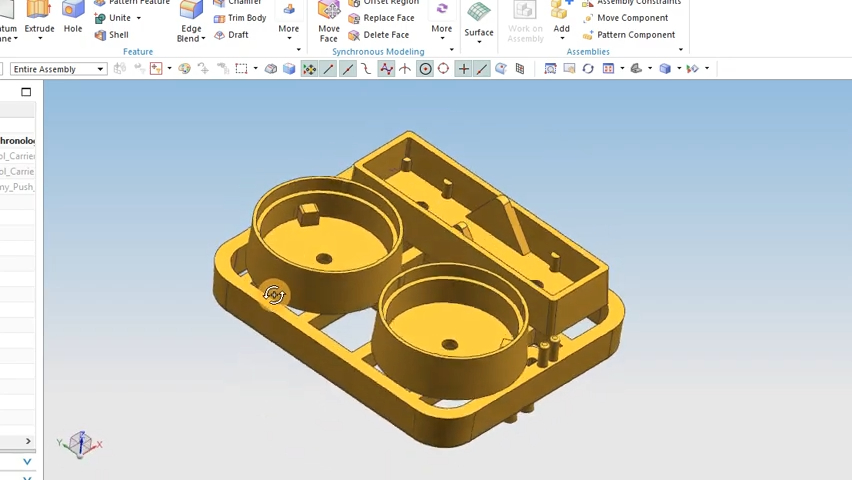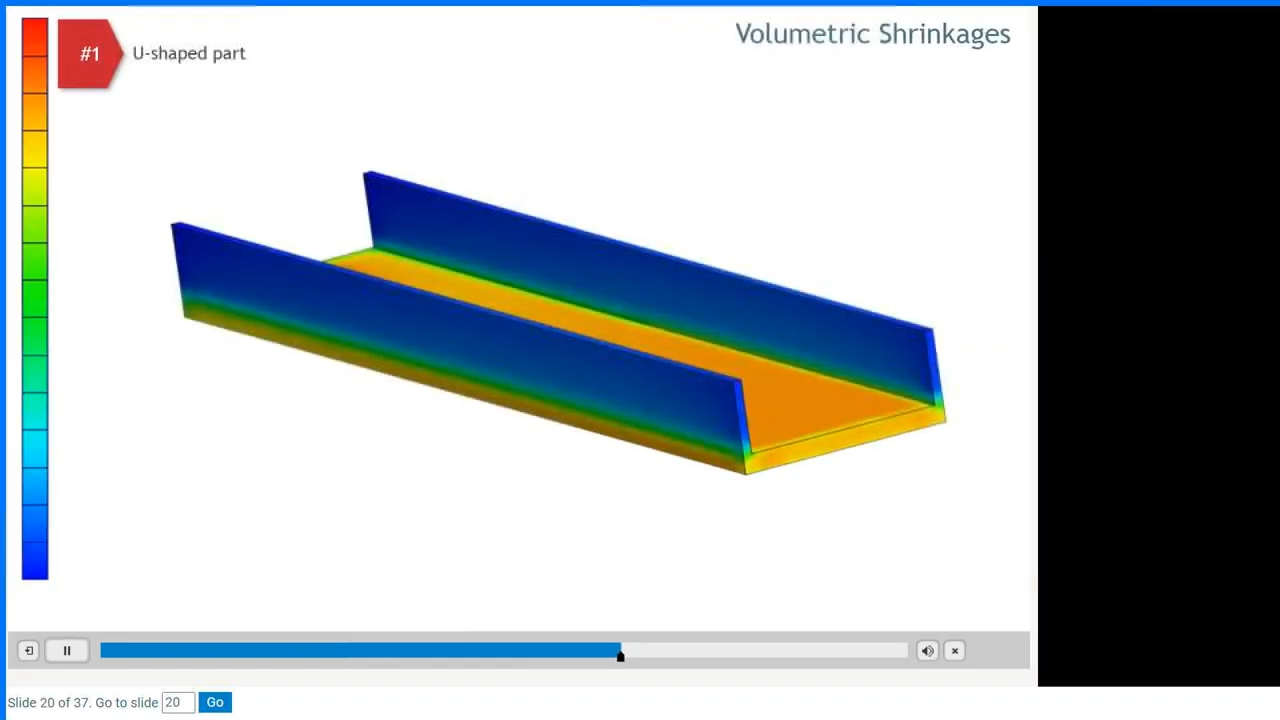Plastic shrinkage is one of the most crucial yet often misunderstood aspects of injection molding. As molten plastic cools and solidifies, it undergoes contraction, leading to dimensional changes that can make or break the final product. Managing shrinkage is essential for maintaining precision, avoiding defects like warping, and ensuring the integrity of molded parts. Whether you're working with common materials like polypropylene or high-performance polymers like polycarbonate, understanding and controlling shrinkage is key to achieving flawless, reliable results.
In this blog, we will present a whole specterm of plastic shrinkage, contributing to your deep understanding of its definition, causes and solutions.

What is Plastic Shrinkage In Injection Molding
Plastic shrinkage is the volumetric contraction of polymers during cooling in injection molding. It can account for up to 20-25% volume reduction, affecting final product dimensions and quality.
Molecular-level shrinkage occurs as polymer chains lose mobility and pack more tightly. This effect is more pronounced in semi-crystalline polymers.Volumetric shrinkage can be calculated using:
Shrinkage (%) = [(Original volume - Final volume) / Original volume] x 100
Thermal contraction contributes significantly to shrinkage. Materials with higher coefficients of thermal expansion experience more pronounced effects.
Impact of Plastic Shrinkage on Molded Parts
Dimensional accuracy: Parts may deviate from design specifications, causing assembly or functional issues.
Appearance quality: Uneven shrinkage can result in surface defects, warpage, and sink marks.
Production costs: Addressing shrinkage-related issues often requires additional processing or material waste.
Performance issues: Dimensional inaccuracies can lead to performance failures, especially in critical applications.
Factors Influencing Injection Molding Shrinkage
Injection molding shrinkage is a critical factor in producing high-quality plastic parts. Several key elements affect shrinkage, ranging from material properties to processing conditions, part design, and mold design. Understanding these factors helps ensure dimensional accuracy and reduce defects during production.
Material Properties
Crystalline vs Amorphous Plastics
The type of plastic—whether it is crystalline or amorphous—plays a large role in shrinkage. Crystalline plastics, such as PA6 and PA66, exhibit higher shrinkage due to the orderly arrangement of their molecular structures as they cool and crystallize. Amorphous plastics like PC and ABS shrink less, as their molecular structures do not undergo significant rearrangement during cooling.
| Plastic Type | Shrinkage Tendency |
| Crystalline | High shrinkage |
| Amorphous | Low shrinkage |
Molecular Weight
The molecular weight of a plastic also influences its shrinkage. Plastics with higher molecular weights tend to have lower shrinkage rates because they exhibit higher viscosity, slowing down the flow of the material and reducing the amount of contraction during cooling.

Fillers and Fibers
Fillers, such as glass fibers, are often added to plastics to reduce shrinkage. These fibers prevent excessive contraction by reinforcing the polymer structure, providing dimensional stability. For example, glass-filled nylon (PA) shrinks significantly less than unfilled nylon.
Pigments
Pigments added to the plastic can impact shrinkage, although their effect is less pronounced compared to fillers. Certain pigments may alter the melt flow or cooling characteristics, subtly affecting shrinkage.
Shrinkage Rates for Different Plastics
Shrinkage rates vary widely across different types of plastics. Below are typical shrinkage values for commonly used materials:
| Plastic Type | Shrinkage Rate (%) |
| PA6 and PA66 | 0.7-2.0 |
| PP (Polypropylene) | 1.0-2.5 |
| PC (Polycarbonate) | 0.5-0.7 |
| PC/ABS blends | 0.5-0.8 |
| ABS | 0.4-0.7 |
Processing Conditions Of In Injection Molding
Melt and Mold Temperature
Melt temperature influences how the polymer flows into the mold and cools. Higher melt temperatures allow for better mold filling but can increase shrinkage due to the greater contraction during cooling. Similarly, mold temperature affects the cooling rate, where cooler molds promote faster solidification and potentially higher shrinkage.
Injection Pressure
Higher injection pressure reduces shrinkage by compacting the material more densely in the mold cavity. This minimizes the amount of void space that can form as the plastic cools and contracts.
Cooling Time
Longer cooling times allow the material to fully solidify in the mold, reducing shrinkage after the part is ejected. However, too rapid cooling can lead to uneven shrinkage and warping.
Packing Pressure and Time
The packing pressure and duration control the amount of material injected into the mold after the initial filling stage. Higher packing pressure reduces shrinkage by compensating for the material contraction that occurs during cooling.
Part Design
Wall Thickness
Parts with thicker walls are prone to greater shrinkage, as thicker sections take longer to cool, leading to more significant contraction. Designing parts with uniform wall thickness can help ensure even cooling and shrinkage.
| Wall Thickness | Effect on Shrinkage |
| Thick Walls | Higher shrinkage |
| Thin Walls | Lower shrinkage |
Geometry
Complex geometries with varying thickness or sharp transitions often lead to uneven cooling, which increases the risk of differential shrinkage. Simpler, more uniform shapes generally shrink more predictably.
Reinforcements and Engravings
Reinforced areas or engraved details on a part can affect shrinkage differently than flat surfaces. Reinforced sections might cool slower and shrink less, while thinner engraved areas could cool faster and experience more shrinkage.

Mold Design
Gate Location and Size
The position and size of the gate, through which the molten plastic enters the mold, directly influence shrinkage. Gates located in thicker sections of a part allow for better packing, reducing shrinkage. Small gates, on the other hand, may limit the flow of material, leading to higher shrinkage in certain areas.
Runner System
A well-designed runner system ensures even distribution of the molten plastic throughout the mold. If the runner system is too restrictive, it can cause uneven flow, resulting in inconsistent shrinkage across different parts of the mold.
Cooling System
The mold’s cooling system is crucial for controlling shrinkage. Properly placed cooling channels help regulate the cooling rate, preventing uneven shrinkage and warping. Effective cooling allows the part to cool uniformly, reducing the likelihood of defects.
Measuring and Calculating Plastic Shrinkage
ASTM D955 and ISO 294-4 standards provide methodologies for measuring shrinkage. The general formula for linear shrinkage is:
Linear Shrinkage (%) = [(Mold dimension - Part dimension) / Mold dimension] x 100
How to Prevent Plastic Shrinkage In In Injection Molding
Design Considerations
Optimizing Part Design
One of the most effective ways to reduce shrinkage is by optimizing the design of the part itself. Parts with uniform wall thicknesses cool more evenly, leading to consistent shrinkage across the entire product. Avoiding sharp transitions and maintaining gradual changes in thickness can help reduce internal stress and warping. Features like ribs or gussets can be added to reinforce areas that are prone to shrinkage while keeping the material flow smooth.
| Design Factor | Effect on Shrinkage |
| Uniform Wall Thickness | Reduces uneven cooling and shrinkage |
| Sharp Transitions | Increases risk of warping |
| Reinforcement (ribs/gussets) | Improves structural stability |
Material Selection
The type of plastic material used has a significant impact on shrinkage. Amorphous materials such as polycarbonate (PC) and ABS have lower shrinkage rates compared to crystalline materials like polypropylene (PP) and nylon (PA6). Adding fillers like glass fibers can also reduce shrinkage, as they help stabilize the material during cooling. The material's molecular weight and thermal properties should align with the product’s design and intended function.
| Material | Shrinkage Rate |
| Amorphous (PC, ABS) | Low |
| Crystalline (PP, PA6) | High |
| Filled (Glass-filled PA) | Low |
Processing Techniques
Adjusting Molding Parameters
Controlling the processing parameters is key to managing shrinkage. Increasing the mold temperature improves material flow, but it also increases shrinkage as the material contracts more during cooling. The melt temperature needs to be set appropriately to ensure proper filling without causing excessive shrinkage. By adjusting these variables, manufacturers can better manage the cooling and contraction of the material.
Pressure Control
Injection and packing pressure directly influence shrinkage. Higher injection pressure ensures that the mold is filled completely, reducing voids and compensating for material contraction. Packing pressure is used to continue injecting material into the mold after the initial filling, which helps to reduce shrinkage as the plastic cools.
| Parameter | Effect on Shrinkage |
| Higher Injection Pressure | Reduces shrinkage |
| Increased Packing Pressure | Compensates for cooling shrinkage |
Cooling Strategies
Cooling time and rate also play a major role in managing shrinkage. Longer cooling times allow for gradual, even cooling, which reduces the risk of warping and shrinkage differences across the part. Cooling strategies like using well-designed cooling channels ensure that the part cools uniformly, preventing hot spots that could lead to localized shrinkage.
| Cooling Strategy | Benefit |
| Longer Cooling Time | Reduces warping and uneven shrinkage |
| Uniform Cooling Channels | Ensures even cooling and shrinkage |
Mold Design Optimization
Gate and Runner System Design
The design of the gate and runner system affects how the material flows into the mold, which in turn impacts shrinkage. Larger gates or multiple gate locations ensure that the mold is filled quickly and evenly, reducing the chances of shrinkage due to incomplete filling. Proper runner design is essential for minimizing flow restrictions, allowing for consistent pressure throughout the cavity.
Cooling System Design
Effective cooling systems are vital for shrinkage control. Cooling channels should be positioned close to the mold cavity to ensure even heat dissipation. Additionally, using conformal cooling channels, which follow

Troubleshooting Shrinkage Issues
Common Problems and Solutions
Injection molding shrinkage can lead to various issues. Here are some frequent problems and their potential solutions:
Warpage
Optimize cooling system design
Adjust processing temperatures
Modify part design for uniform wall thickness
Sink Marks
Increase packing pressure and time
Redesign part to eliminate thick sections
Use gas-assisted injection molding for thick areas
Voids
Increase injection speed and pressure
Implement vacuum-assisted molding
Optimize gate location and size
Dimensional Inaccuracies
Fine-tune processing parameters
Use computer simulation for shrinkage prediction
Implement statistical process control (SPC)
Case Studies
Case Study 1: Automotive Dashboard
Problem: A car manufacturer faced warpage issues in their dashboard panels.
Solution: They implemented the following changes:
Redesigned cooling channels for uniform cooling
Adjusted processing temperatures
Modified rib design to reduce differential shrinkage
Result: Warpage reduced by 60%, meeting quality standards.
Case Study 2: Electronic Enclosure
Problem: A consumer electronics company experienced sink marks on their device enclosures.
Solution: The team took these steps:
Increased packing pressure by 15%
Extended packing time by 2 seconds
Redesigned thick sections with coring
Result: Sink marks eliminated, improving product aesthetics.
Case Study 3: Medical Device Component
Problem: A medical device manufacturer faced dimensional accuracy issues in a critical component.
Solution: They implemented:
Advanced simulation software for shrinkage prediction
Precise control of mold and melt temperatures
Custom material blend with reduced shrinkage characteristics
Result: Achieved dimensional tolerances within ±0.05mm, ensuring device functionality.
These case studies highlight the importance of a multi-faceted approach to troubleshooting shrinkage issues. They demonstrate how combining design modifications, process optimization, and material selection can effectively resolve complex shrinkage-related problems in injection molding.
Conclusion
Effective shrinkage management requires consideration of material properties, part and mold design optimization, and careful control of processing conditions. Ongoing research and technological advancements continue to improve shrinkage management techniques in injection molding.
Looking to optimize your plastic manufacturing? Team MFG is your go-to partner. We specialize in tackling common challenges like plastic shrinkage, offering innovative solutions that enhance both aesthetics and functionality. Our team of experts is dedicated to delivering products that exceed your expectations. Contact us rightnow.
FAQs about Plastic Shrinkage
1. What causes shrinkage in plastic injection molding?
Shrinkage occurs as the plastic cools and solidifies in the mold. During cooling, the polymer chains contract, causing the material to reduce in volume. Factors like material type, mold temperature, and cooling rates directly affect the degree of shrinkage.
2. How does the type of plastic affect shrinkage?
Different plastics shrink at different rates. Crystalline plastics like polypropylene (PP) and nylon (PA) generally shrink more due to the formation of crystalline structures during cooling, while amorphous plastics like ABS and polycarbonate (PC) have lower shrinkage since their structure doesn’t undergo as much change.
3. How can shrinkage be minimized in injection molding?
Shrinkage can be minimized by optimizing processing conditions such as increasing packing pressure, adjusting mold and melt temperatures, and ensuring uniform cooling through well-designed cooling systems. Using fillers like glass fibers also reduces shrinkage by reinforcing the polymer.
4. How do mold design and part geometry influence shrinkage?
Mold design and part geometry greatly affect shrinkage. Uneven wall thickness, poor cooling channel placement, or improperly located gates can cause differential shrinkage, leading to warping or distortion. Designing parts with uniform wall thickness and ensuring balanced cooling helps control shrinkage.
5. What are the typical shrinkage rates for different plastics?
Shrinkage rates vary depending on the plastic. Common values include:













